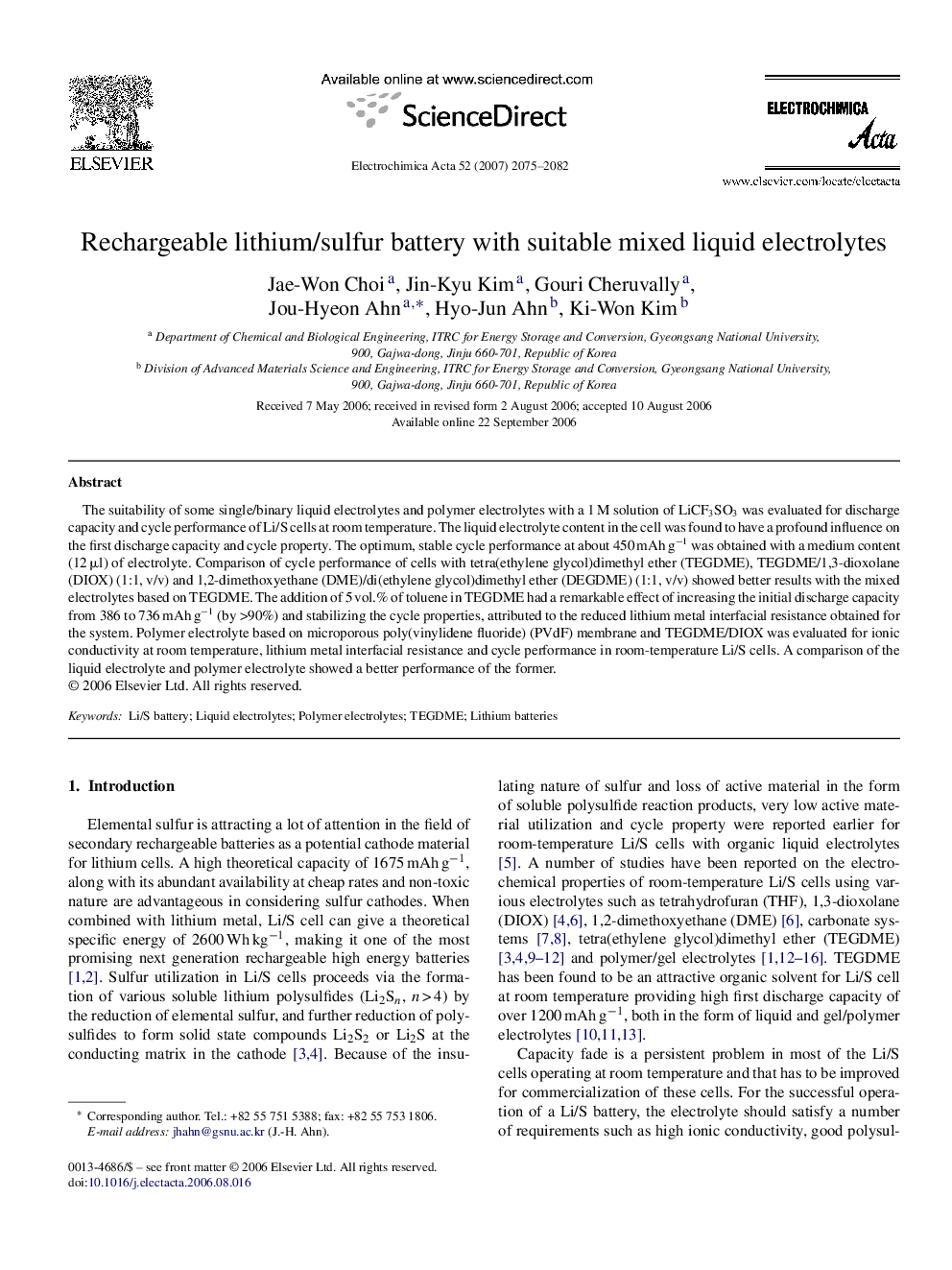| Article ID | Journal | Published Year | Pages | File Type |
|---|---|---|---|---|
| 196413 | Electrochimica Acta | 2007 | 8 Pages |
The suitability of some single/binary liquid electrolytes and polymer electrolytes with a 1 M solution of LiCF3SO3 was evaluated for discharge capacity and cycle performance of Li/S cells at room temperature. The liquid electrolyte content in the cell was found to have a profound influence on the first discharge capacity and cycle property. The optimum, stable cycle performance at about 450 mAh g−1 was obtained with a medium content (12 μl) of electrolyte. Comparison of cycle performance of cells with tetra(ethylene glycol)dimethyl ether (TEGDME), TEGDME/1,3-dioxolane (DIOX) (1:1, v/v) and 1,2-dimethoxyethane (DME)/di(ethylene glycol)dimethyl ether (DEGDME) (1:1, v/v) showed better results with the mixed electrolytes based on TEGDME. The addition of 5 vol.% of toluene in TEGDME had a remarkable effect of increasing the initial discharge capacity from 386 to 736 mAh g−1 (by >90%) and stabilizing the cycle properties, attributed to the reduced lithium metal interfacial resistance obtained for the system. Polymer electrolyte based on microporous poly(vinylidene fluoride) (PVdF) membrane and TEGDME/DIOX was evaluated for ionic conductivity at room temperature, lithium metal interfacial resistance and cycle performance in room-temperature Li/S cells. A comparison of the liquid electrolyte and polymer electrolyte showed a better performance of the former.
